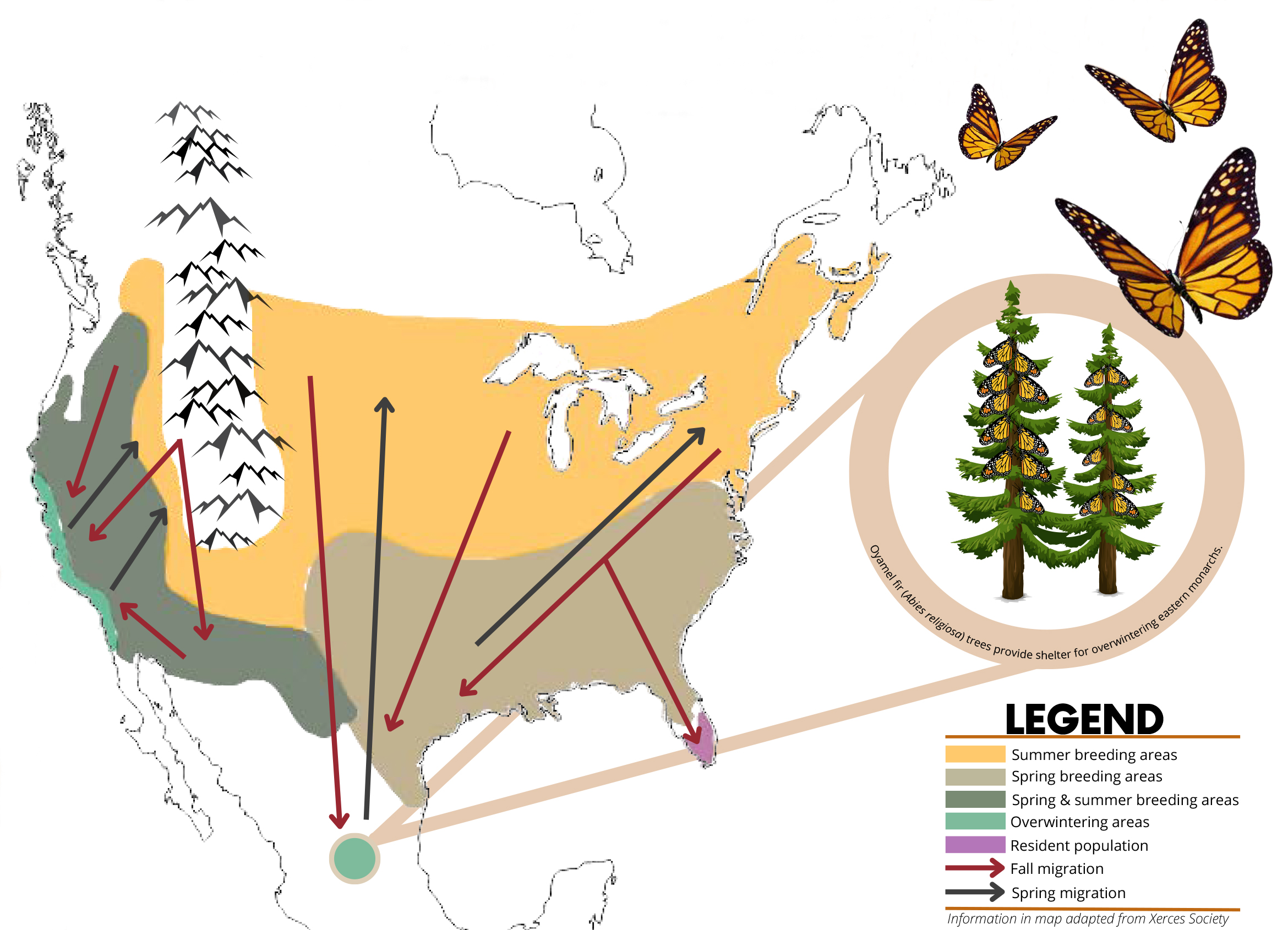Northern Great Plains
One of the main causes for monarch decline in the Northern Great Plains is a lack of habitat and food resources6. Adult monarch butterflies depend on diverse nectar resources in this area from May to September for energy during both their northward and southward migration. An inadequate supply of milkweed or nectar resources at any point during migration could negatively impact the overwintering population numbers.
There is evidence to suggest that monarchs prefer small, dispersed pockets of habitat composed of diverse, native food resources9. By planting species suggested in Table 1, we can aid monarchs by giving them the energy and habitat they require while migrating through the Northern Great Plains. Most monarch nectar resources perform best in open, sunny sites. Monarchs also require larger structures for overnight protection against harsh elements and predators. Having either trees, shrubs or other sheltered areas can keep monarchs safe.
Table 1. Recommended plant species to provide quality monarch habitat with both milkweed species for larvae and nectar resources for adults10. All species are perennials unless otherwise denoted (*) and are native to the Northern Great Plains region. Please consult the USDA's PLANTS database (plants.usda.gov) for more details on native species in your area.
| Bloom |
Common Name |
Scientific Name |
Flower Color |
Max. Height (Feet) |
Water Needs (Low, Medium, or High) |
| Summer |
Prairie coneflower |
Ratibida columnifera |
Yellow/red |
3 |
L |
| Summer |
Swamp milkweed |
Asclepias incarnata |
Pink |
4 |
M/H |
| Summer |
Common milkweed |
Asclepias syriaca |
white/purple/pink |
8 |
M |
| Summer |
Showy milkweed |
Asclepias speciosa |
White/pink |
4 |
L |
| Summer |
Narrow-leaved purple coneflower |
Echinacea angustifolia |
Pink/purple |
2 |
L |
| Summer |
Wild bergamont |
Monarda fistulosa |
White/pink/purple |
5 |
M |
| Summer |
Flodman's thistle |
Cirsium flodmanii |
Pink/purple |
3 |
L |
| Summer to Fall |
Spotted joe pye weed |
Eutrochium maculatum |
Pink/purple |
6 |
M/H |
| Summer to Fall |
Common sunflower* |
Helianthus annuus |
Yellow |
8 |
M |
| Summer to Fall |
Stiff sunflower |
Helianthus pauciflorus |
Yellow |
6 |
L/M |
| Summer to Fall |
Dotted blazing star |
Liatris punctata |
Pink/purple |
2 |
M |
| Summer to Fall |
Tall goldenrod |
Solidago altissima |
Yellow |
4 |
M |
| Summer to Fall |
White heath aster |
Symphyotrichum ericoides |
White |
3 |
L |
| Summer to Fall |
Praire ironweed |
Vernonia fasciculata |
Purple |
5 |
M/H |
Information in table adapted from Fallon, C., N.L. Adamson, A. Stine, S. Jepsen, and M. Vaughan. 2016. Monarch Nectar Plants: Northern Plains. Monarch Joint Venture, Xerces Society, and Garden for Wildlife.







